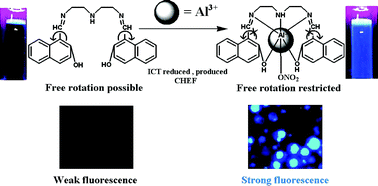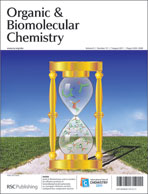An efficient fluorescent Al3+ receptor, N-(2-hydroxy-1-naphthalene)-N′-(2-(2-hydroxy-1-naphthalene)amino-ethyl)-ethane-1,2-diamine (L) has been synthesized by the condensation reaction between 2-hydroxy naphthaldehyde and diethylenetriamine. High selectivity and affinity of L towards Al3+ in ethanol (EtOH) as well as in HEPES buffer at pH 7.4, makes it suitable to detect intracellular Al3+ with fluorescence microscopy. Metal ions, viz.Li+, Na+, K+, Mg2+, Ca2+, Mn2+, Co2+, Ni2+, Cu2+, Zn2+, Ag+, Cd2+, Hg2+ and Pb2+ do not interfere. The lowest detection limit for Al3+ is 3.0 × 10−7 M and 1.0 × 10−7 M in EtOH and HEPES buffer respectively.


 Please wait while we load your content...
Please wait while we load your content...